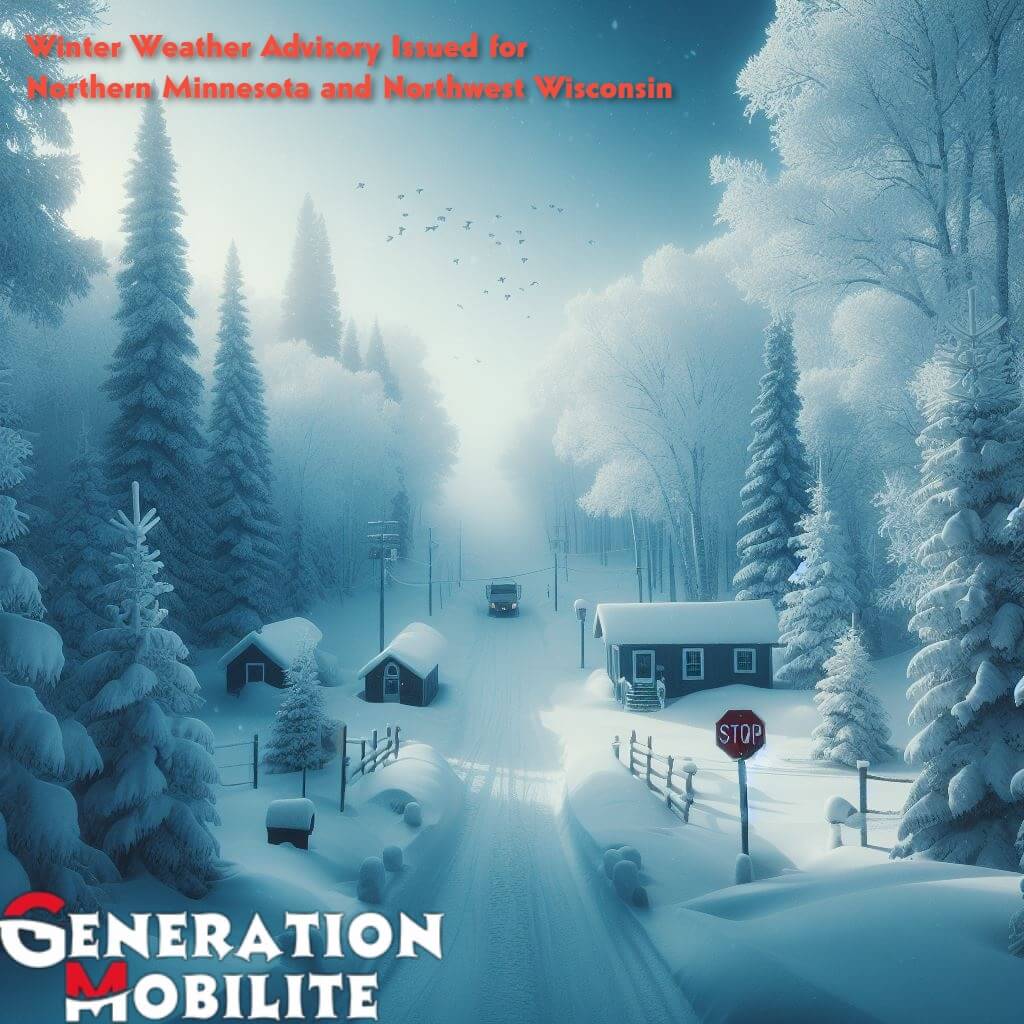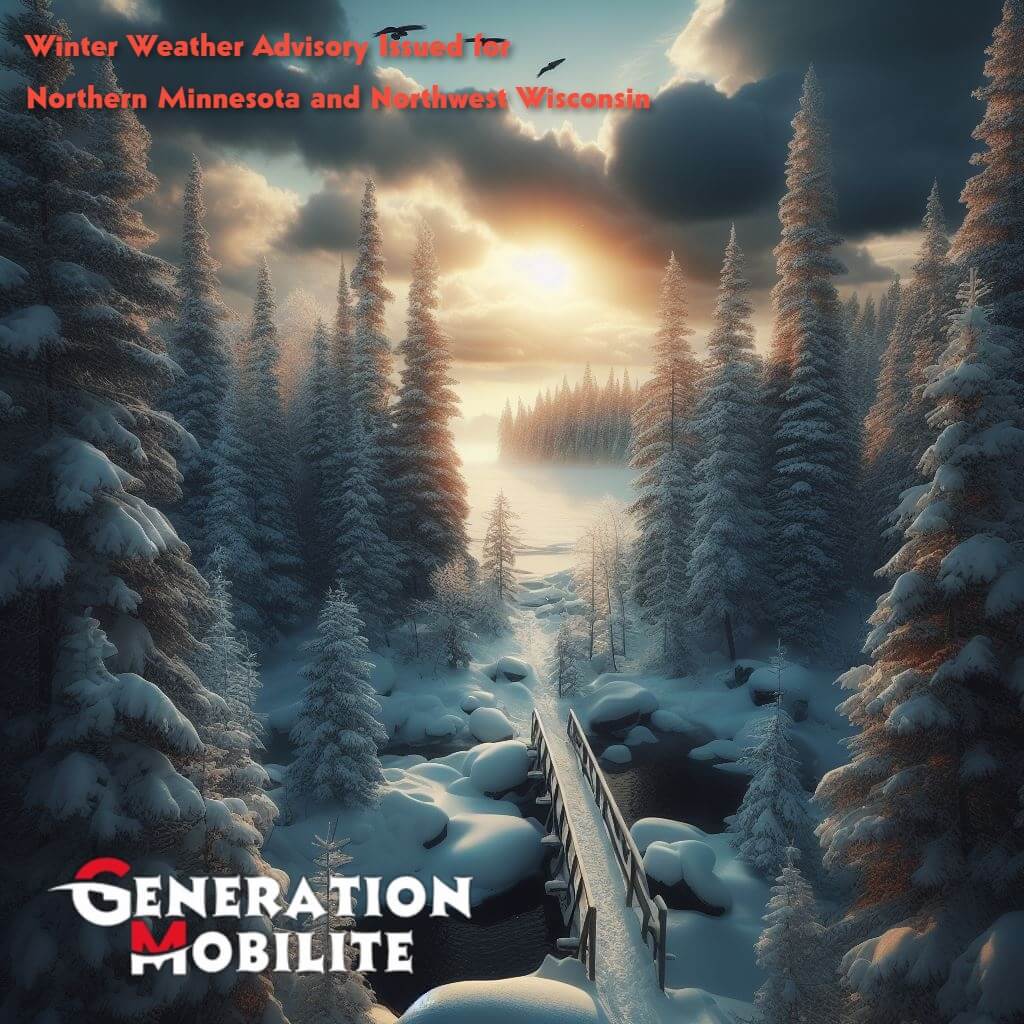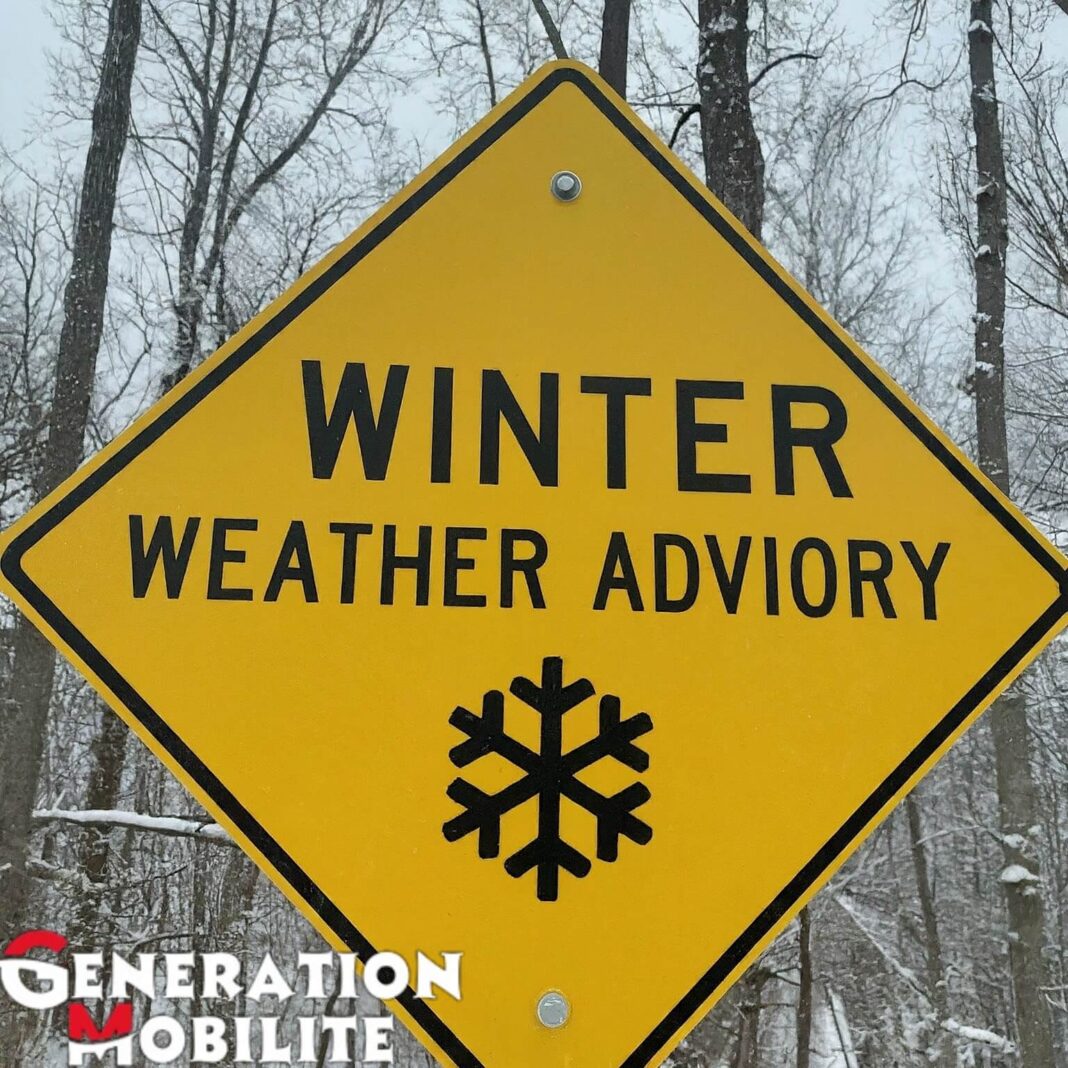Introduction
As the winter season tightens its grip across the northern regions of the United States, the National Weather Service (NWS) has sounded the alarm, issuing a winter weather advisory issued for northern Minnesota and northwest Wisconsin. This advisory, which went into effect at 6 PM on February 23rd and is set to expire at 6 AM on February 24th, serves as a clarion call for residents and businesses alike to prepare for the impending onslaught of snow, strong winds, and plummeting temperatures. In this comprehensive analysis, we delve into the intricacies of this winter weather advisory, examining its implications, potential impacts, and the necessary precautions to be taken.
Table of Contents
Understanding the Winter Weather Advisory
What is a Winter Weather Advisory?
The NWS issues A winter weather advisory when a combination of winter weather conditions, such as snow, freezing rain, sleet, and strong winds, is expected to create significant inconveniences and potential hazards. While not as severe as a winter storm warning, a winter weather advisory issued for northern Minnesota and northwest Wisconsin should be taken seriously, as it signals the need for preparedness and caution.
| Region | Start Time | End Time | Snow Accumulation | Wind Gusts |
| Northern Minnesota | 6 PM, Feb 23 | 6 AM, Feb 24 | 2-4 inches | Up to 35 mph |
| Northwest Wisconsin | 6 PM, Feb 23 | 6 AM, Feb 24 | 2-4 inches | Up to 35 mph |
The Specifics of the Advisory
According to the NWS, the winter weather advisory issued for northern Minnesota and northwest Wisconsin encompasses a vast area, including major cities like Duluth, Superior, Grand Marais, and Ashland, as well as numerous rural towns and villages. The advisory forecasts 2 to 4 inches of snow accumulation, with locally higher amounts possible. Additionally, strong winds ranging from 15 to 25 mph, with gusts reaching up to 35 mph, are expected, creating conditions ripe for blowing and drifting snow, reduced visibility, and treacherous travel conditions.
Potential Impacts and Risks
According to the NWS, the winter weather advisory issued for northern Minnesota and northwest Wisconsin encompasses a vast area, including major cities like Duluth, Superior, Grand Marais, and Ashland, as well as numerous rural towns and villages. The advisory forecasts 2 to 4 inches of snow accumulation. The combination of heavy snowfall, strong winds, and plummeting temperatures poses many risks and potential impacts for the affected regions. Some of the most significant concerns include:
1. Hazardous road conditions: The accumulation of snow, coupled with gusty winds, can lead to reduced visibility, slick surfaces, and increased risk of accidents for both pedestrians and motorists.
2. Power outages: The weight of heavy snow and the force of strong winds can cause trees and power lines to fall, resulting in widespread power outages across the region.
3. Structural damage: The substantial snow accumulation on rooftops and other structures can lead to potential collapses or structural damage, threatening property and personal safety.
4. Disruption of daily life: School and business closures, transportation delays, and interruptions to essential services are all potential consequences of the severe winter weather conditions.
With locally higher amounts possible. Additionally, strong winds ranging from 15 to 25 mph, with gusts reaching up to 35 mph, are expected, creating conditions ripe for blowing and drifting snow, reduced visibility, and treacherous travel conditions.
Preparedness Measures

Home and Personal Preparedness
To mitigate the risks associated with the winter weather advisory issued for northern Minnesota and northwest Wisconsin, it is crucial for residents to take proactive measures to ensure their safety and well-being. Some essential steps include:
1. Stocking up on essential supplies: Ensure you have a sufficient supply of non-perishable food items, bottled water, batteries, flashlights, and any necessary medications.
2. Winterizing your home: Check for drafts around windows and doors and seal them with weatherstripping or caulk. Insulate exposed pipes to prevent freezing, and consider alternative heating sources in case of power outages.
3. Preparing emergency kits: Assemble emergency kits for your home and vehicle, including blankets, warm clothing, first aid supplies, and a shovel.
4. Monitoring weather updates: Stay informed by regularly checking weather forecasts and advisories, and be prepared to adjust plans accordingly.
Workplace and Business Preparedness
For businesses and workplaces, the winter weather advisory issued for northern Minnesota and northwest Wisconsin necessitates a proactive approach to ensure operations continuity and employees’ safety. Key considerations include:
1. Remote work contingencies: Establish policies and procedures for remote work or flexible scheduling to minimize the need for travel during severe weather conditions.
2. Emergency communication plans: Develop clear communication protocols to keep employees informed about closures, delays, or changes in operations due to inclement weather.
3. Facility maintenance: Ensure facilities are adequately winterized, with snow removal plans for walkways, parking lots, and entrances.
4. Essential personnel planning: Identify essential personnel and develop contingency plans for their safe transportation and accommodation during severe weather events.
Navigating Winter Weather: Tips and Best Practices
Traveling in Adverse Conditions
While avoiding unnecessary travel during the winter weather advisory issued for northern Minnesota and northwest Wisconsin is advisable, some situations may require venturing out onto the roads. In such cases, taking the following precautions is crucial:
1. Equip your vehicle: Ensure your vehicle is adequately equipped for winter driving conditions, with snow tyres, adequate windshield wiper fluid, and an emergency kit.
2. Slow down and increase the following distance: Reduce your speed and maintain a safe distance from other vehicles to allow for increased stopping distances on slick roads.
3. Stay informed: Check road conditions and advisories before setting out, and be prepared to alter your route or delay travel if necessary.
4. Pack emergency supplies: Keep an emergency kit in your vehicle, including blankets, non-perishable food, water, and a fully charged mobile phone.
Outdoor Safety
For those who must venture outside during the winter weather advisory issued for northern Minnesota and northwest Wisconsin, taking the following steps can help ensure personal safety:
1. Dress appropriately: Layer up with warm, water-resistant clothing, including a hat, gloves, and sturdy boots with good traction.
2. Watch for signs of frostbite and hypothermia: Be aware of the symptoms of these conditions and seek immediate medical attention if they occur.
3. Avoid overexertion: Shoveling snow or engaging in strenuous activities can be dangerous in extreme cold and should be done cautiously.
4. Use caution on icy surfaces: Walk carefully on sidewalks and driveways, as ice can be challenging to detect and can lead to falls and injuries.
The Aftermath: Recovery and Resuming Operations

Snow Removal and Cleanup
Once the winter weather advisory for northern Minnesota and northwest Wisconsin has passed, the focus will shift to snow removal and cleanup efforts. This process can be physically demanding and logistically challenging, requiring careful planning and execution. Key considerations include:
1. Prioritizing essential areas: Identify and prioritize clearing critical areas such as emergency routes, hospital entrances, and essential business locations.
2. Coordinating resources: Collaborate with local authorities, contractors, and community organizations to coordinate snow removal efforts and ensure efficient resource allocation.
3. Personal safety: When shovelling or clearing snow, take necessary breaks, stay hydrated, and use proper lifting techniques to avoid injury.
4. Structural assessments: Inspect buildings and structures for potential damage caused by the weight of accumulated snow or fallen trees/power lines.
Power Restoration and Infrastructure Repairs
In the event of power outages or damage to infrastructure, coordinated efforts will be required to restore essential services and repair any affected systems. This may involve:
1. Utility company coordination: Work closely with local utility companies to prioritize power restoration efforts and ensure timely updates for affected residents and businesses.
2. Infrastructure assessments: Conduct thorough assessments of roads, bridges, and other critical infrastructure to identify and address any damage or safety concerns.
3. Emergency response planning: Collaborate with emergency responders, healthcare facilities, and essential services to ensure continuity of critical operations during the recovery phase.
4. Communication and transparency: Maintain open lines of communication with the public, providing regular updates on recovery efforts and any ongoing advisories or warnings.
Data and Statistical Analysis
To better understand the potential impacts of the winter weather advisory issued for northern minnesota and northwest wisconsin, it is essential to analyze relevant data and statistics. The following tables provide insights into historical winter weather patterns, potential economic impacts, and preparedness levels in the affected regions.
Historical Snowfall Averages and Extremes
Location Avg. Annual Snowfall Record 1-Day Snowfall Avg. Winter Power Outages
Duluth, MN 86.1 inches 24.6 inches (Dec 1982) 8
Superior, WI 61.4 inches 24.5 inches (Dec 1975) 6
Grand Marais, MN 76.8 inches 22.0 inches (Nov 1995) 10
Ashland, WI 68.9 inches 20.2 inches (Mar 1976) 7
Potential Economic Impacts of Winter Weather Events
| Impact | Description |
| Hazardous Road Conditions | Snow accumulation and high winds can reduce visibility and cause slick surfaces |
| Power Outages | Weight of snow/winds can down power lines leading to outages |
| Structural Damage | Heavy snow loads can potentially cause roof/structural collapses |
| Disruptions | School/business closures, transportation delays likely |
Preparedness Levels in Northern Minnesota and Northwest Wisconsin
| Task | Description |
| Home Winterization | Insulate pipes, seal drafts, have alternative heating ready |
| Stock Supplies | Non-perishable food, water, medication, batteries, first aid kit |
| Vehicle Preparation | Snow tires, ice scraper, emergency kit with blankets |
| Monitor Weather | Stay updated on forecasts and adjust plans accordingly |
Winter Driving Safety Tips
| Tip | Description |
| Equip Vehicle | Snow tires, wiper fluid, emergency kit |
| Slow Down | Reduce speed and increase following distances |
| Stay Informed | Check road conditions and delay travel if needed |
| Emergency Supplies | Pack blankets, food, water, charged phone |
These data and statistics provide valuable insights into the potential impacts of the winter weather advisory issued for northern Minnesota and northwest Wisconsin and the historical context and preparedness levels in the affected regions. By analyzing this information, local authorities, businesses, and residents can make informed decisions and take appropriate measures to mitigate the risks of severe winter weather events.
Conclusion
The winter weather advisory issued for northern Minnesota and northwest Wisconsin is a stark reminder of the challenges posed by the region’s harsh winter climate as the region braces for heavy snowfall, strong winds, and plummeting temperatures, individuals, businesses, and communities must take proactive measures to ensure their safety and continuity of operations.
By understanding the potential impacts, implementing preparedness plans, and adhering to best practices for navigating winter weather conditions, the affected regions can weather this storm and emerge resilient. Collaboration among local authorities, emergency responders, utility companies, and community organizations will be crucial in coordinating effective response and recovery efforts.
As the winter season continues to unfold, it is essential to remain vigilant, monitor weather updates, and prioritize safety above all else. By working together and taking the necessary precautions, the residents of northern Minnesota and northwest Wisconsin can demonstrate their resilience in the face of nature’s icy embrace.
Location Average Power Outages per Winter Season Longest Duration of Outage (hours)
Duluth, MN 8 72
Superior, WI 6 48
Grand Marais, MN 10 96
Ashland, WI 7 60


